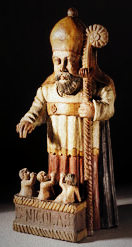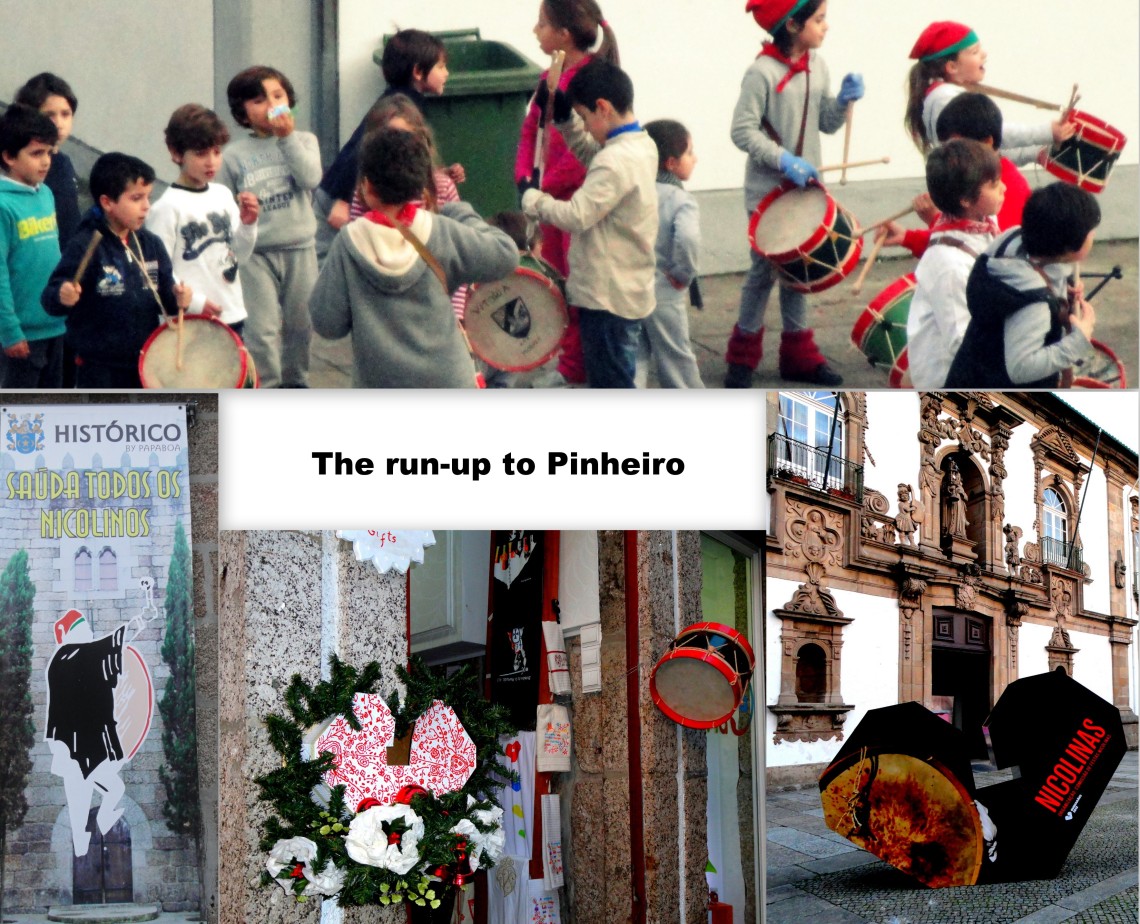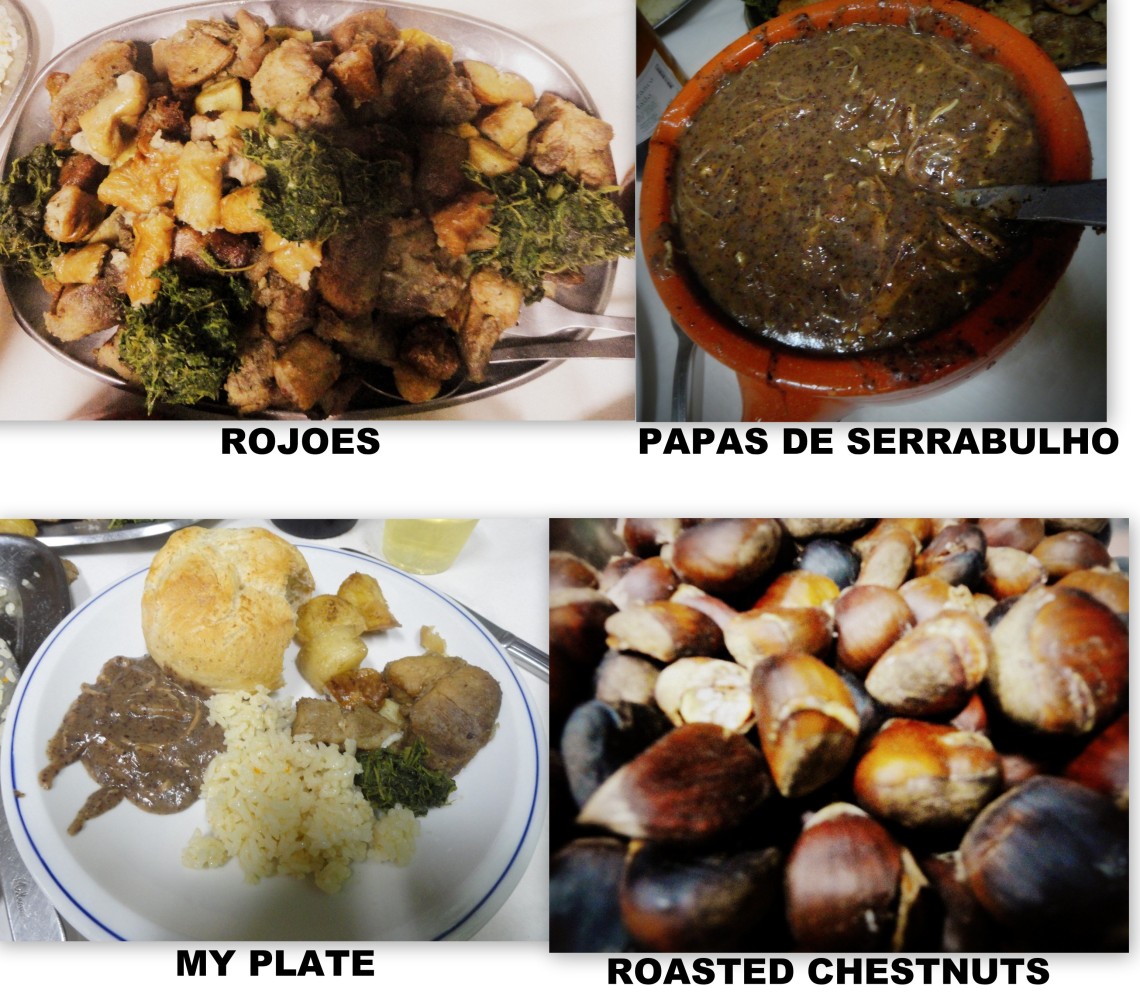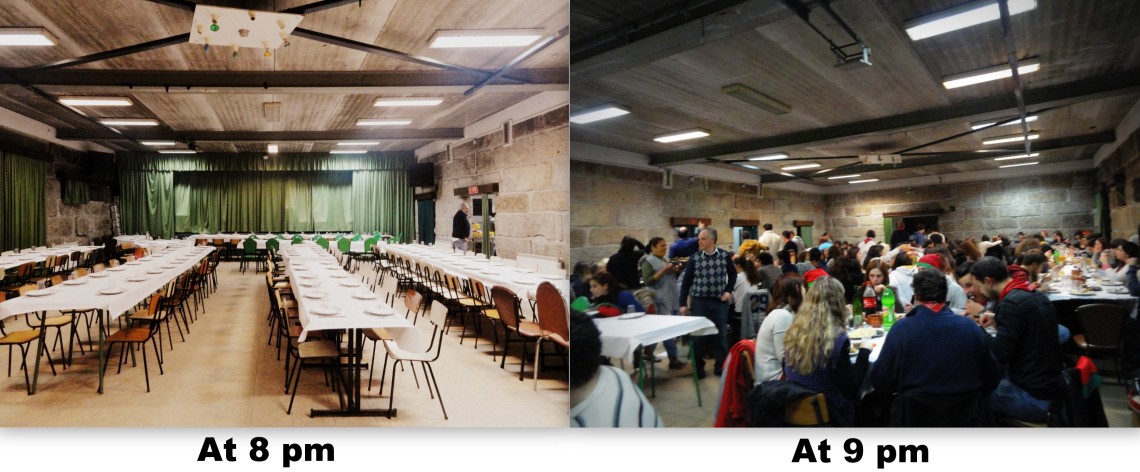It is the 29th of November – Europe’s capital of culture for 2012, Guimaraes is all geared up for one of the biggest festivities of the year – Pinheiro. Pinheiro marks the start of the Nicolinas celebration which lasts until the 7th of December. The origin of the festivities dates back to more than three centuries ago, making it one of the oldest festivals in the world. The festival is held in honour of St. Nicholas of Myra who is the patron saint of students. Legend has it that jolly old St. Nicholas brought back to life three children whose bodies had been cut up into pieces by a wicked inn-keeper. I’ve known that St. Nicholas is venerated more in Central and Eastern Europe as he hails from Asia Minor and this got me wondering as to how he got so popular in Guimaraes, which is all the way across the continent. Well, apparently a couple of centuries ago, the devotion to the saint was brought by pilgrims who used to come to Guimaraes on their way to Santiago de Compostela in Galicia,Spain. Guimaraes was a stopover for offering devotion to Mother Mary and at Santiago de Compostela the pilgrims paid homage to St. James.

The concept of Pinheiro takes its roots from the initial years where a large pine heralded the beginning of the celebration. Pinheiro translates to ‘pine tree’ and as the name suggests, the pine tree is central to the celebration and the procession. It is carried in a cart drawn by oxen at the head of the procession. The cart is decorated with lanterns and a combination of red and white garlands. Behind the pine tree and the cart stands a man on a high pedestal, dressed up as a Roman soldier. He is said to represent Minerva, the Roman Goddess of wisdom. The procession is led by the ‘Head of Bars’, a member of the committee that organizes the festival of Nicolinas. There is a different committee of students elected every year and they are entrusted with the responsibility of carrying out all the festivities during the week-long celebration. Check out the video of this year’s election which took place at Toural, one of the main squares in Guimaraes. Getting back to the order of the procession, after the Head of Bars comes the ‘doll’, which is a figure raised on a stick and is used to mark the rhythm of the drums. The rest of the procession consists of hordes of people, young and old, beating away on their drums, yelling and shouting, and making their way to the Church of Santos Passos, where the pine tree is planted in the ground. Originally the tree planting used to be at around 8 p:m following which students would meet for late suppers. But with time this has changed and people meet for ‘as ceias Nicolinas’ (the St. Nicholas suppers) and then they head out at midnight to gather for the parade. The parade starts near S . Mamede and passes by the castle of Guimaraes.
So how did I spend my first Pinheiro?
I decided to work from home on that day, but turns out it wasn’t that great an idea as the children in the school nearby begin their Pinheiro celebration a little too early. They started drumming sometime in the afternoon and kept on at it. I had never thought that KIDS would be able to reach that decibel level with drums. At around 4:30 pm, I shut my laptop and decided to walk around the city and see what sort of preparations were going on. All the stores had their Christmas decorations up, there was excitement in the air and this usually quiet city had been transformed into a place bustling with activity. After snapping a few pictures, I got back home.

We had made reservations for dinner at a place near the Guimaraes castle, very close to where the parade would pass by. It is important to make reservations if you want to have dinner on this night as all the restaurants are packed. One of my friends who had been here for the celebration the previous year too, told us about this place he had been to last time which served a traditional meal every Pinheiro in a big hall. Since the place is tucked away and is hard to come by if you’re not a local, the place has just Portuguese people and is completely non-touristy, just the way we wanted it to be 🙂 The owners had told us to come at 7:30 pm as the kitchen was scheduled to close at 10 pm. We went there at 8 pm and the place was empty! They probably hadn’t counted on anyone being punctual and assumed that like all the others we would arrive at 8: 30 pm. We paid 17.5 euros each for the meal that they were going to serve us. The meal consisted of bread, papas de sarrabulho, rojoes, rice , roasted chestnuts and unlimited homemade wine.

The papas de sarrabulho is a dish made with beef and or/chicken with spices and the main ingredient is pig’s blood. Unfortunately for me, I didn’t know this and helped myself to quite a generous portion. It was only after the owner explained to us what all the dishes were that I came to know the harsh truth. By then I had already taken a second helping and man, I had a really difficult time shoving it down my throat after that. It tasted quite good but the concept of mixing pig’s blood with food has never fascinated me. I washed it down with a couple of glasses of white wine, which wasn’t a very wise decision, but granted me some temporary respite all the same. The main dish was the ‘rojoes’ , a signature dish of the Minho region in Portugal. There were some potatoes to go along with it and the ghastly tripe. As one of my friends puts it “the Portuguese make sure that they consume every possible part of the pig”. The pork was tasty and we polished it off, leaving behind a plate with crumbs and all the tripe untouched. After we were done, they brought us a plate of roasted chestnuts, which I absolutely love. By then, the whole place had taken on a new atmosphere, the hall had filled up, people had got their drums, everybody was eating, drinking and seemed to be in high spirits.

The St. Nicholas supper is an important part of Pinheiro and it is most looked forward to as everyone has a jolly good time – there’s good food, students can socialize with each other, former students can have a reunion with their batchmates and it is just another excuse to party the whole night. At around 12 am, everyone headed out onto the street where a lot of people had already gathered for the parade. I took a couple of shots of the procession but since my camera isn’t really the best for night use, some of the pictures are a little hazy.

At around 1 :15 am , I abandoned the procession and made my way home as it started raining and I had to go to work the next day. I really wanted to stay on till the end and witness the planting of the pine tree, but I guess I’ll have to do that next year. You can see how they plant the pine tree here.
All in all, it was a great night and you’ve got to hand it to the Portuguese for keeping up with traditions, unlike most other developed countries in the world today.



1 Comment